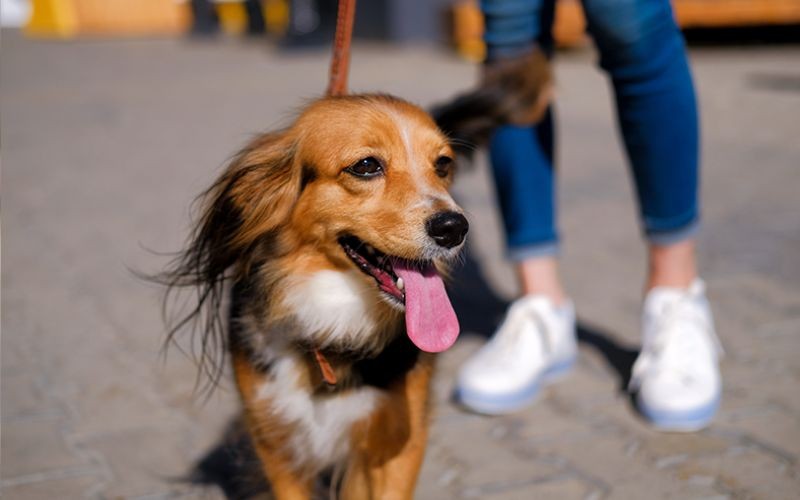
What Does It Really Mean When a Dog Is Reactive?
Have you ever been out walking your dog when they suddenly start pulling, barking, or even growling because they've spotted another dog or a bike? If that rings a bell, you might be living with a reactive dog.A reactive dog is one who responds in a big, intense way to things in their environment that feel threatening or overly exciting. But here’s the key: being reactive doesn’t mean being aggressive. It usually means they’re overwhelmed and struggling to cope.
The good news? There’s a reason behind these behaviors—and plenty we can do to help our dogs feel calmer and more confident in the world around them.
The Roots of Reactivity – Why Early Socialization Matters
Reactivity doesn’t just appear out of nowhere. Most of the time, it goes way back to early puppyhood, specifically during what’s known as the socialization window.
This is a critical time when puppies are mentally and emotionally ready to explore the world and build associations (both good and bad) that stay with them for life.
During this sensitive phase, puppies should be gently and gradually introduced to a wide variety of experiences: different people, other dogs, all kinds of environments, sounds, objects, textures, and situations. The goal isn’t to overwhelm them, it’s to help them build emotional resilience in a safe, controlled way and at their own pace.
Because this is such a delicate and complex phase, it’s not uncommon for inexperience to lead to an incomplete handling of it.
Science backs this up. Research in canine behavioral development shows that dogs who miss out on structured, positive early experiences are more likely to develop behavioral issues, including reactivity. That’s why choosing a responsible breeder or shelter, and investing in thoughtful puppy guidance early on, is one of the most important things a pet parent can do.
Need help?
Connect With a Farmina Pet Nutritionist!
Recognizing Reactivity: What to Look For
A reactive dog is pictured as barking, lunging, growling.
Reactivity starts long before those big, loud behaviors. It’s a sign of emotional overload—and it often begins with much more subtle clues.
Learning to read your dog’s body language is essential. Dogs show discomfort and stress by signals like lip licking, yawning, looking away, sniffing the ground or shifting their weight. If these signs go unnoticed, the dog may escalate to more obvious signals like stiff muscles, a rigid tail, wide eyes, or freezing. The barking and lunging usually come last.
One helpful concept is the reactivity threshold. This is the point where your dog can no longer process what’s happening and starts reacting impulsively. Every dog’s threshold is different, and it can change depending on their mood, environment, and past experiences. For example, your dog might calmly watch a bike go by on a quiet morning walk, but completely lose it in a noisy, crowded park.
When pet parents learn to spot the early signs of discomfort, they can step in before things get too intense. This not only makes outings easier, but helps the dog feel seen, supported, and safe.
Living With a Reactive Dog – Management and Support
Living with a reactive dog can be challenging, but it is absolutely manageable—and deeply rewarding. Reactivity is not something that can be “fixed” overnight. It’s not a bad habit to break, but rather an emotional state to understand, support, and gradually reshape.
The first step is management. This means setting up the dog’s environment in a way that reduces exposure to triggers while building positive experiences. Avoiding overly stimulating routes during walks, giving the dog distance from stressors, and allowing them time to decompress are simple yet powerful strategies.
Training should always be rooted in modern behavioral science and empathy.
Modern techniques involve gradually introducing the dog to a trigger at a level they can tolerate and pairing it with something they enjoy—like treats, play, or affection—so that the emotional response begins to shift from fear or frustration to anticipation of something good.
But it’s not just about training. Relationship-building and emotional safety are just as important. Reactive dogs benefit from consistency, predictable routines, and activities that let them express natural behaviors—like sniffing, exploring, and moving freely in calm spaces. These moments of decompression are essential for their mental balance.
Conclusion
Understanding reactivity means seeing the dog beyond the behavior. It’s not about control or correction—it’s about emotion, experience, and unmet needs. Whether it stems from missed early socialization, an inability to communicate freely, or a build-up of stress in daily life, reactivity is a signal. A signal that our dog is overwhelmed, and that they need our help—not our judgment.
By recognizing the early signs, avoiding outdated myths, and choosing thoughtful strategies we can change the way we support reactive dogs. We can give them space, predictability, and the tools to feel safe in a complex world. And in doing so, we build something far deeper than obedience: we build trust.
Every dog deserves to feel understood and every pet parent deserves to know that with the right knowledge and support, change is not only possible—it’s already beginning.

